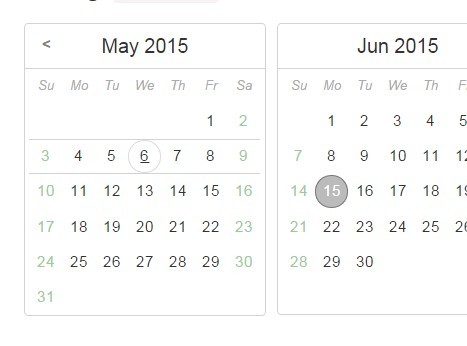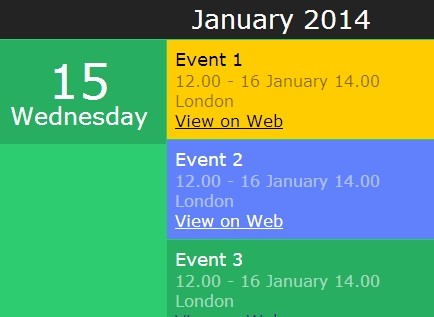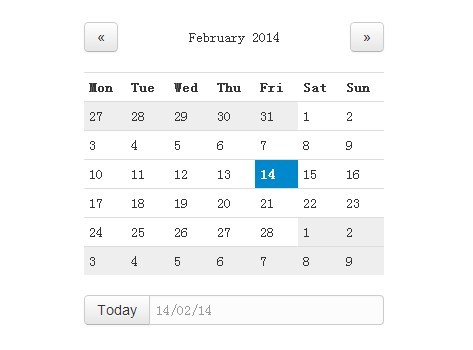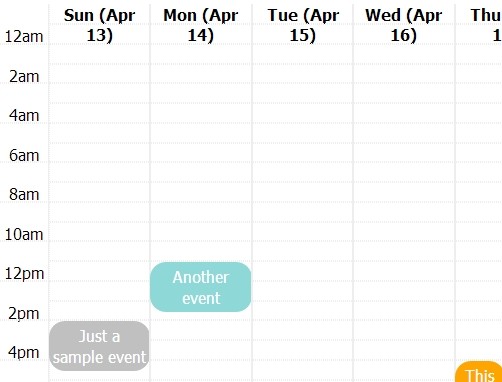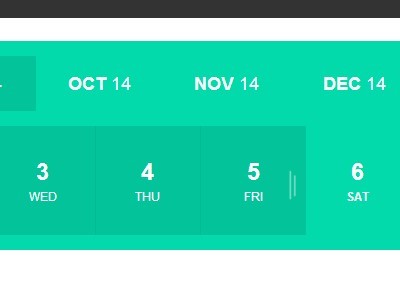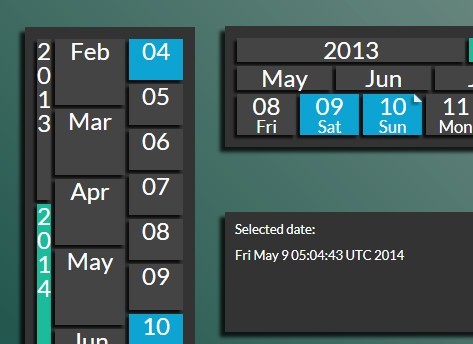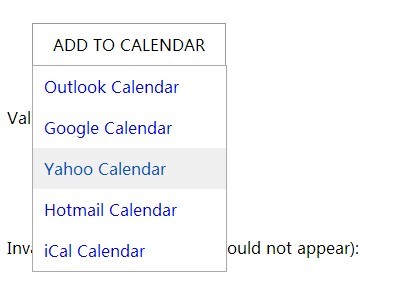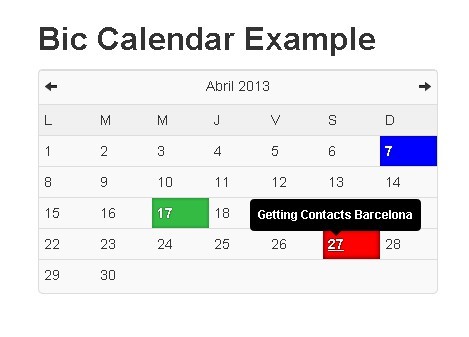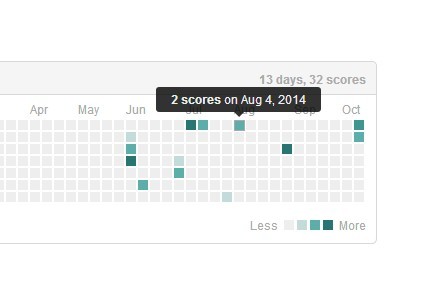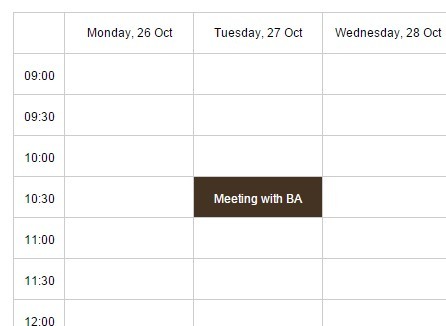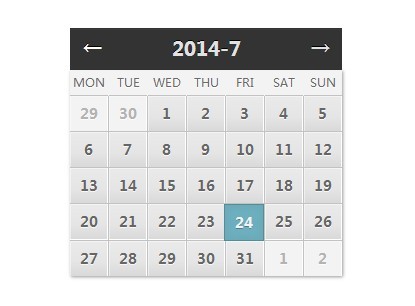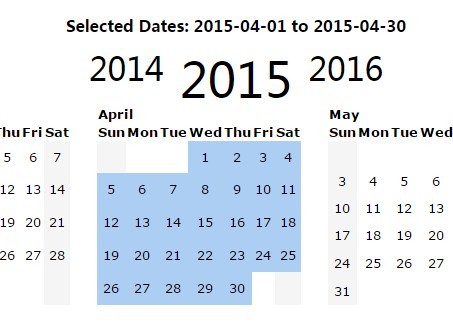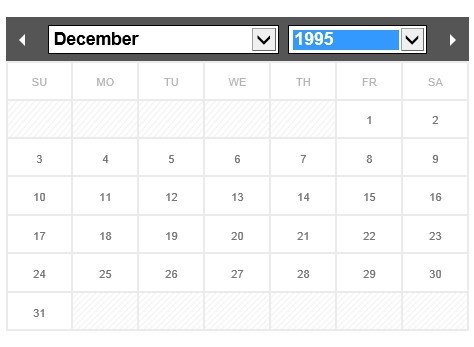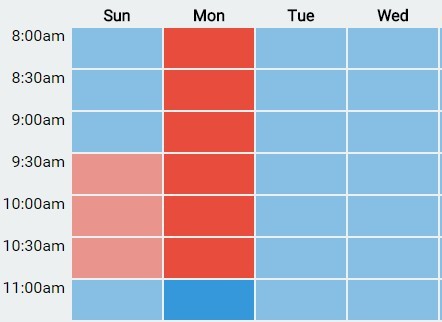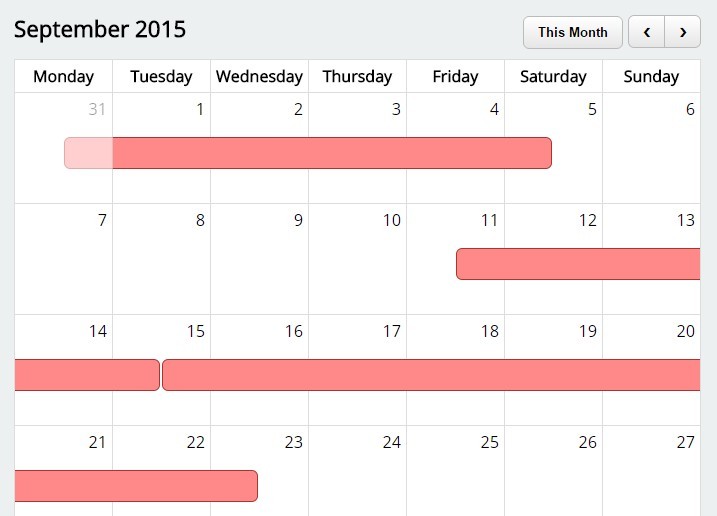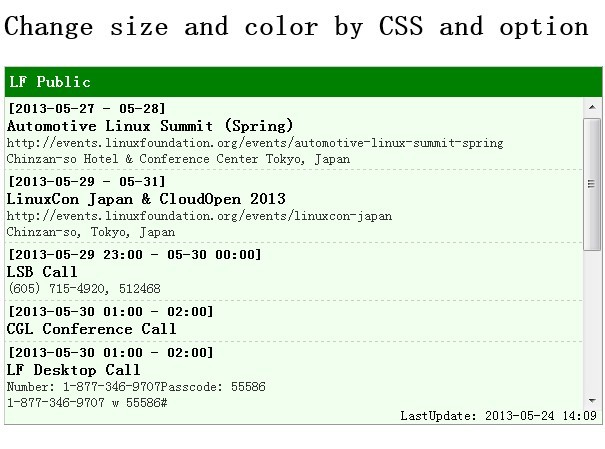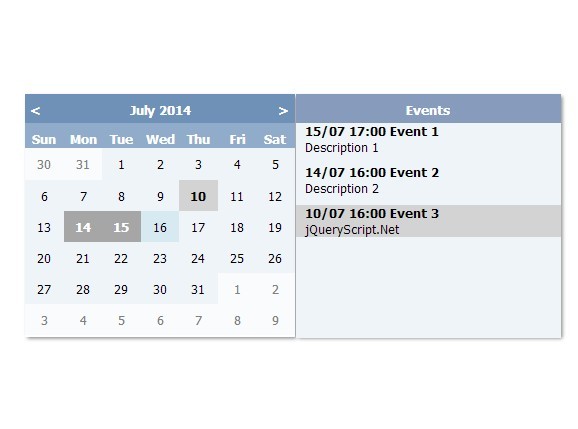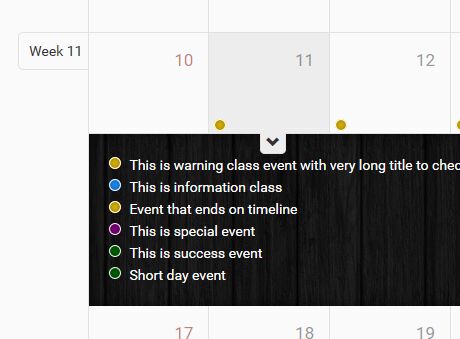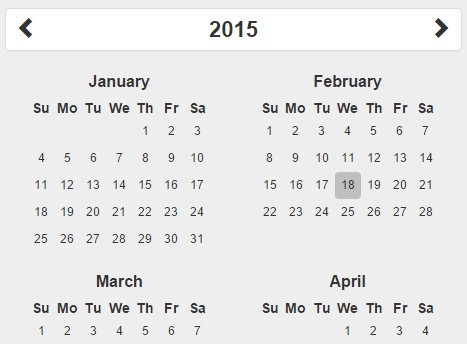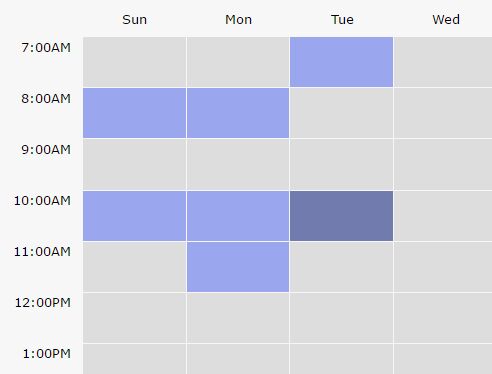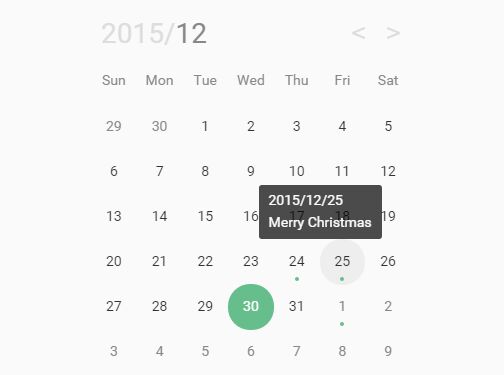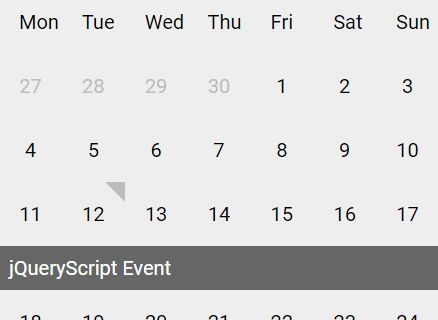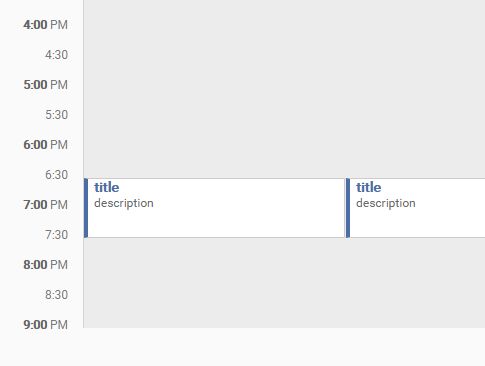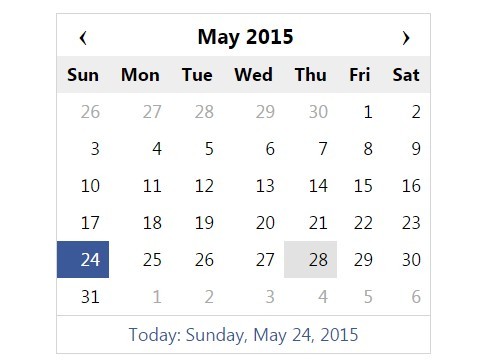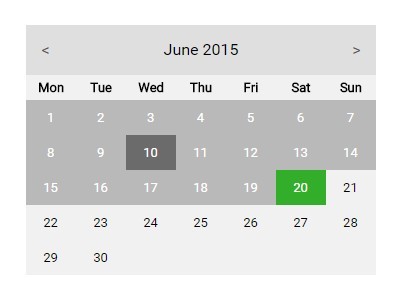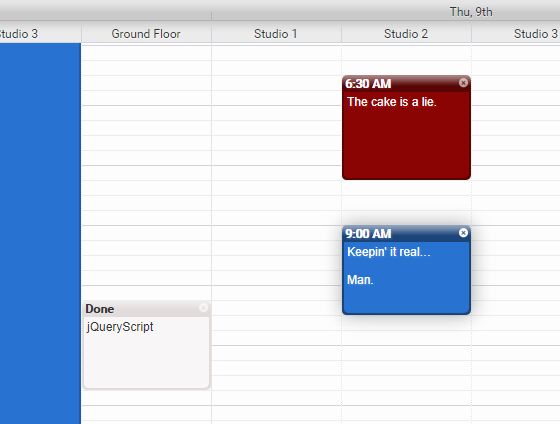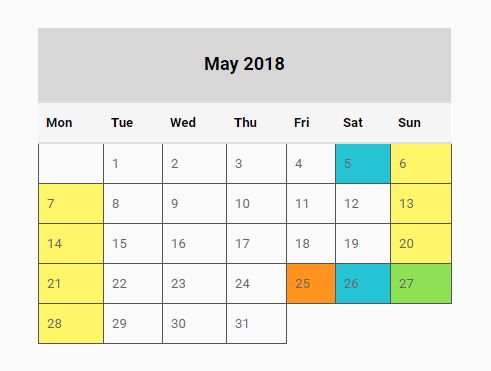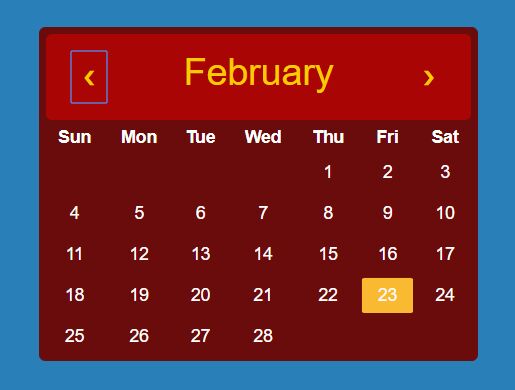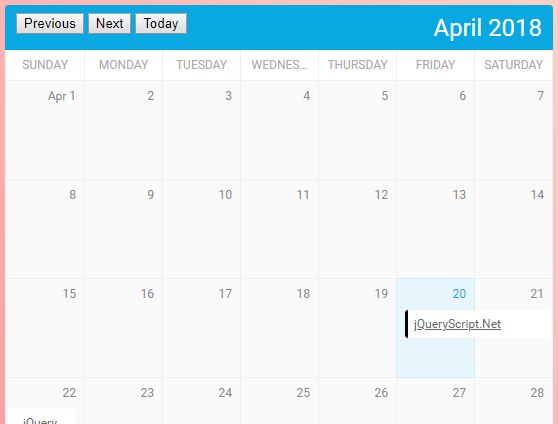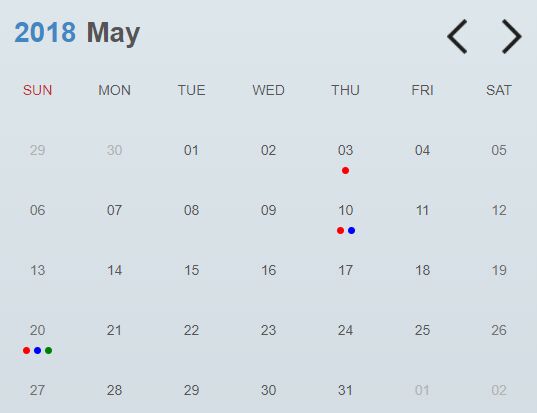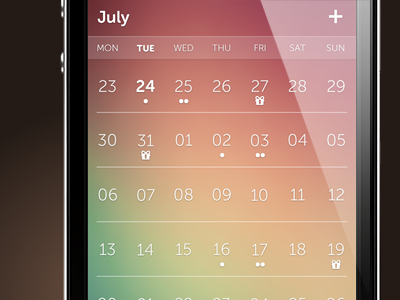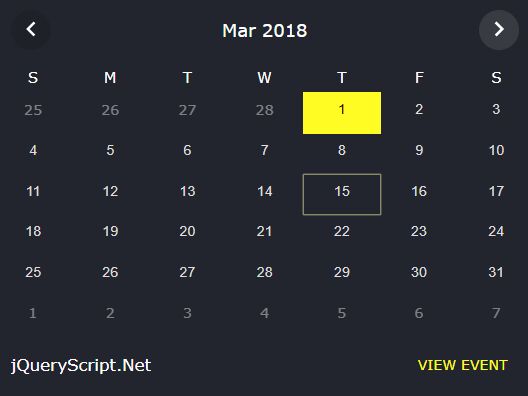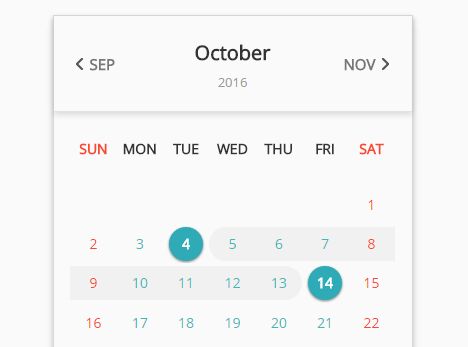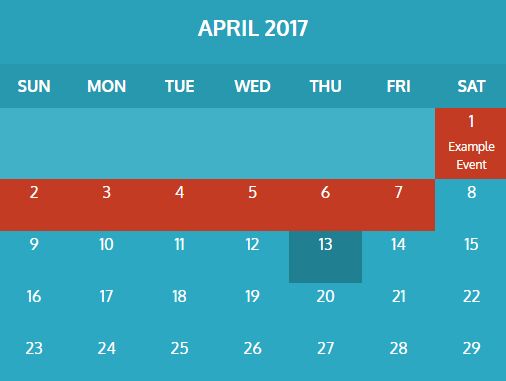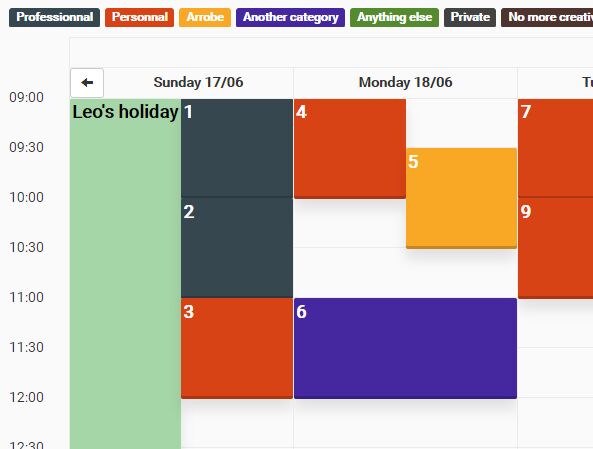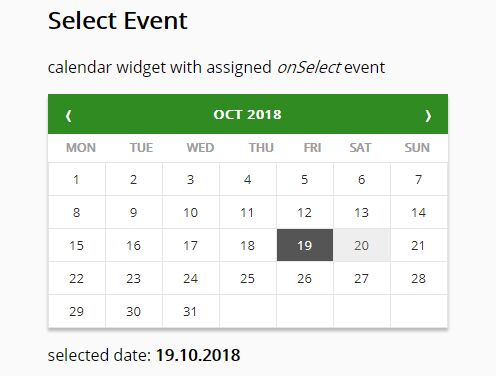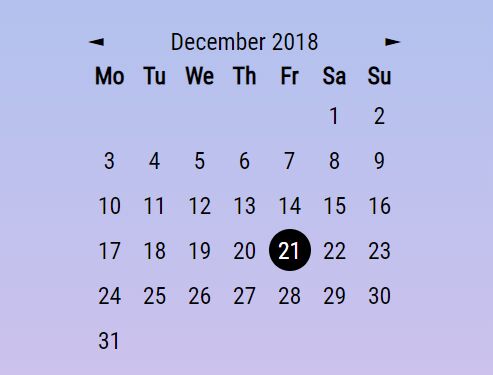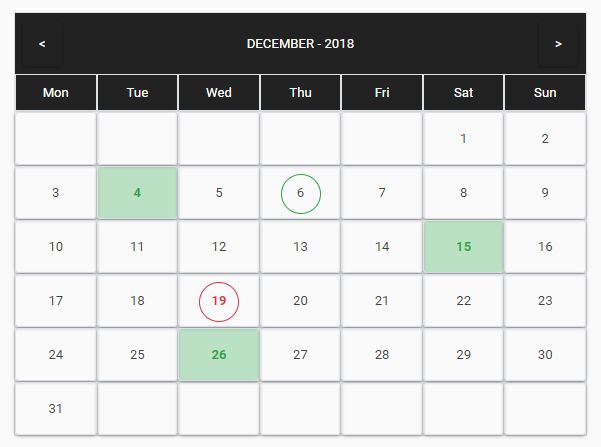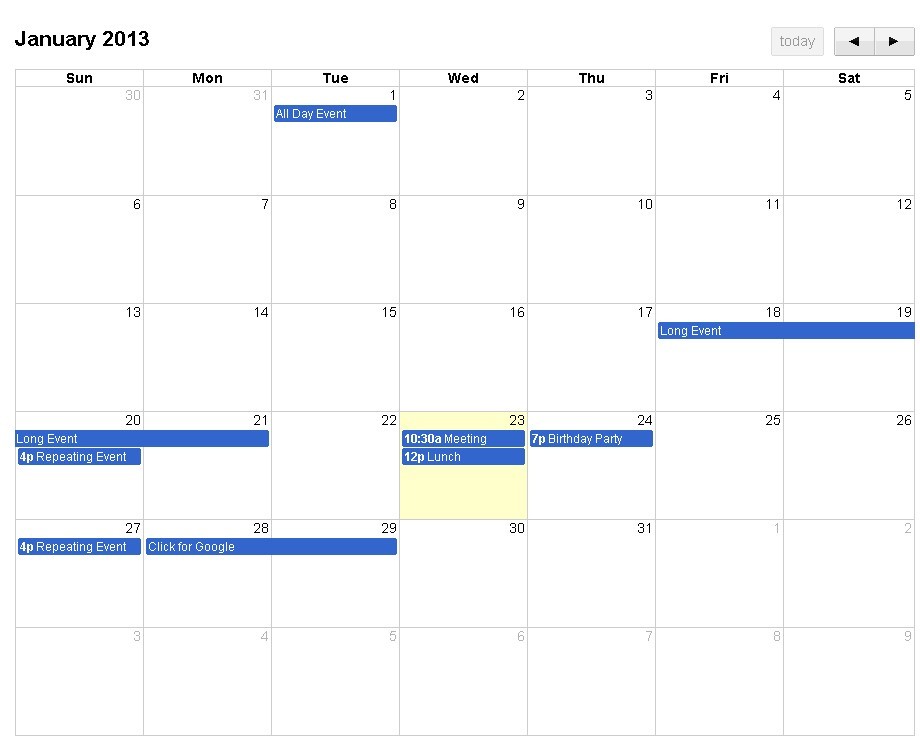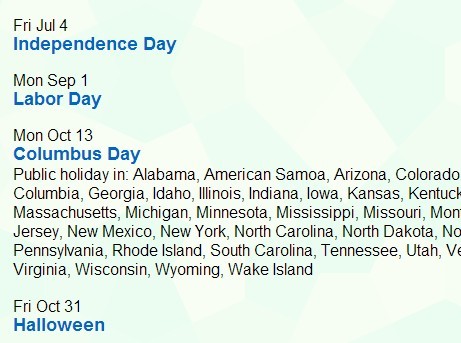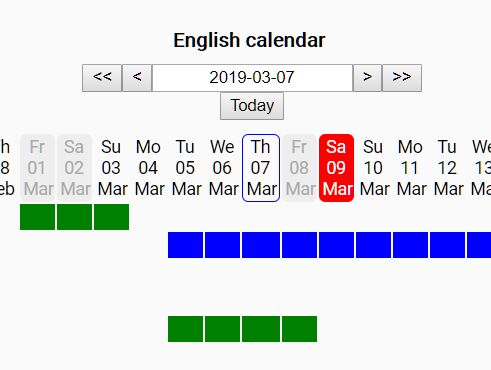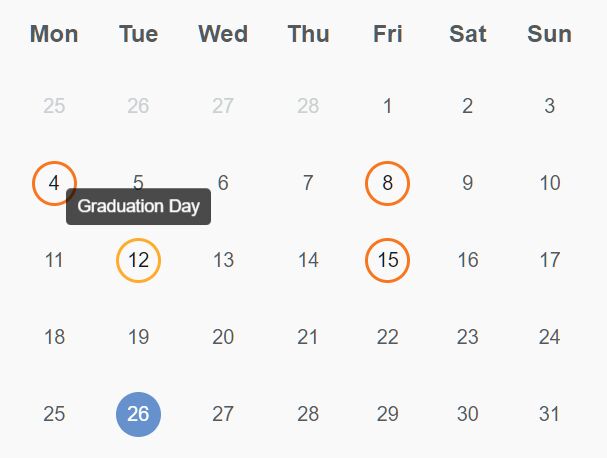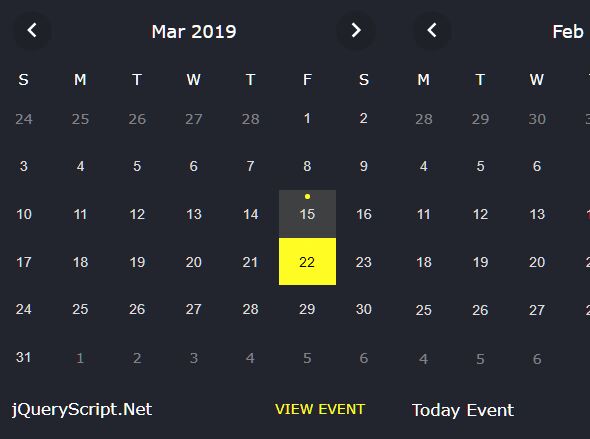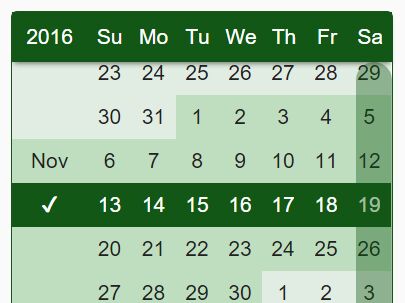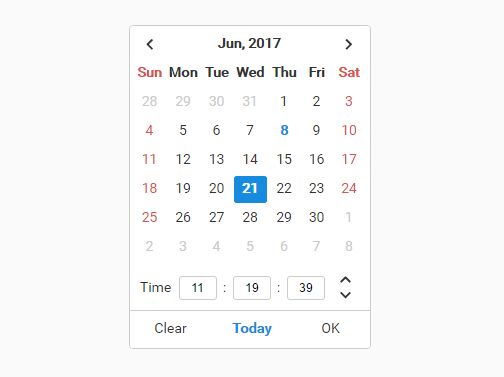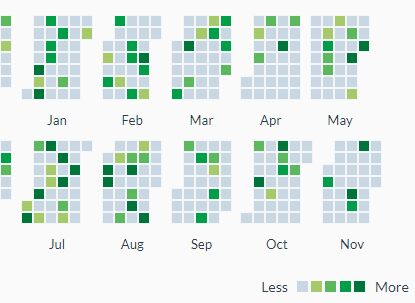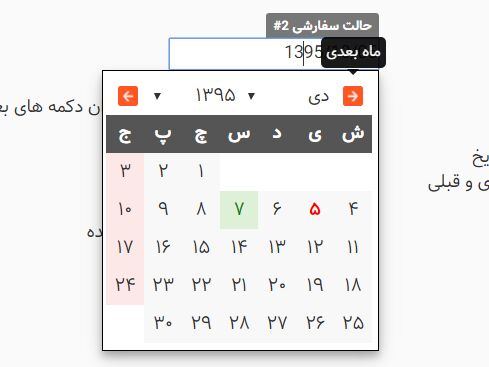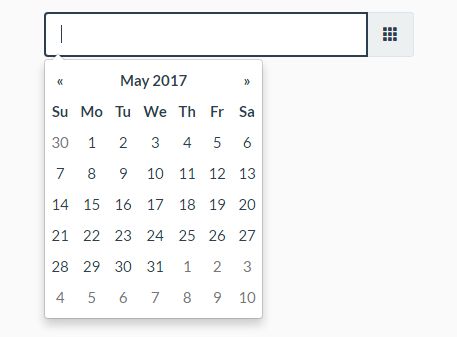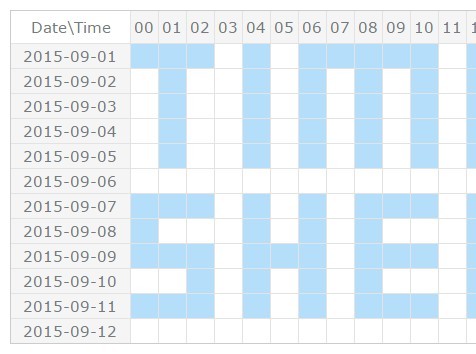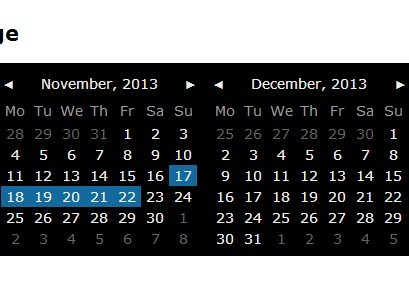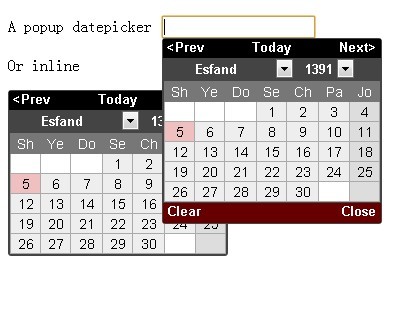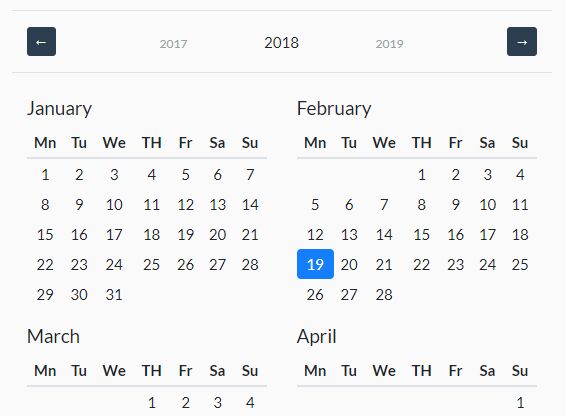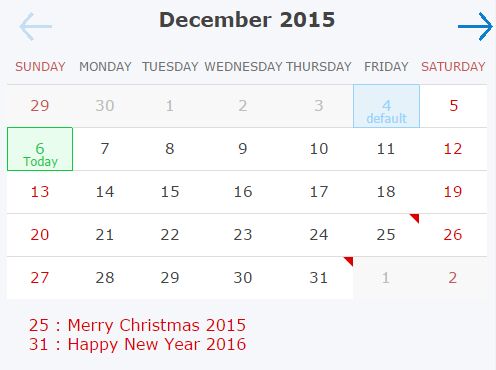jQuery yacal
Yet Another Calendar plugin for jQuery.
What is yacal?
Yacal is a lightweight (~3.5KB min / ~1.5kb gzip) jQuery calendar plugin, easy to configure and use. It comes with a default template, but you can tune up at your taste, and it also supports some basic internationalization.
The main idea behind yacal is getting a basic calendar DOM structure that you can use as you please. So, do whatever you want with it.
What is not?
- It's not a Date Picker (but you can build one with it adding some lines of jQuery and Monent.js in your project)
- It's not a Events Calendar (again, you can do some basic jQuery stuff and get events calendar working too)
Demo
Here is a Demo page
Installation
yacal only requires jQuery (>= v1.8.x) as dependency. So, just include the script after the jQuery library (unless you are packaging scripts somehow else):
<!-- uncompressed (~7.2kb, for development) --> <script src="/path/to/jquery.yacal.js"></script> <!-- OR compressed (~3.5kb, for production) --> <script src="/path/to/jquery.yacal.min.js"></script>Note: yacal's javascripts and stylesheets are located in project's
distfolder
Usage
With data-* attributes
<div class="yacal" data-date="2020/10/26" data-near-months="2"></div>with Javascript
<div id="calendar2000"></div>$('#calendar2000').yacal({ date: '2000/1/1', nearmonths: 1, });Default Configurations
options = { date: new Date(), // Sets the date. i.e: '2010/10/10', '2012/06' , default is now nearMonths: 0, // How many months will be displayed to each side. Default is 0 showWeekdays: true, // Toggles the week days ('Su','Mo','Tu',etc). Default is true minDate: null, // Sets the minimal date range (inclusive). For markup only. Default is null maxDate: null, // Sets the maximal date range (inclusive). For markup only. Default is null //firstDay: 0, // Sets the first day of the week. Default is 0 (Sunday) (TODO) isActive: null, // function to set active class name on each specific days dayClass: null, // function to adds additional custom classes to days }); $('#aDefaultCalendar').yacal(options);Helpers
isActive
isActive is a helper function you can pass in on the options that will get called for each day and passed the date. You can return true or false as to whether the date should be active or not (get the active css class applied). This is basically an enhancement of the minDate/maxDate options that lets you set the active class separately for each date, rather than just starting at minDate or ending at maxDate.
It is useful to have a setting of active based on each specific day.
If you do something like:
var unavailable = [ { Arrival: new Date(2015, 12, 1), Departure: new Date(2015, 12, 10) }, { Arrival: new Date(2015, 10, 3), Departure: new Date(2015, 10, 4) } ]; $('#calendar').yacal({ isActive: function(date) { for (var i = 0; i < unavailable.length; i++) { if (date.valueOf() >= unavailable[i].Arrival).valueOf() && date.valueOf() <= unavailable[i].valueOf()) return false; } return true; } });dayClass
dayClass is a helper function that adds additional custom classes to days.
$('#calendar').yacal({ dayClass: function(date) { if (date.getDate() % 2) return "odd"; else return "even"; }); });CSS Styles
There is a CSS file in the project (dist/jquery.yacal.css) with some basic definitions for yacal's default template.
Templates
In yacal is possible to configure the resulting output. The plugin provides access to all the templates used in the rendering. Just keep in mind that every month has this structure:
<!-- pseudo-html --> <wrap> <nav/> <month> <monthTitle/> <weeksdays/> <week> <day /> <day /> ... <week/> ... </month> ... <clearfix/> </wrap>Default templates:
$('.calendar').yacal({ tpl: { day: '<a class="day d#weekday##weekend##today##selected##active#" data-time="##time#">#day#</a>', weekday: '<i class="weekday wd#weekday#">#weekdayName#</i>', week: '<div class="week week#week##weekSelected#" data-time="#weekTime#">|</div>', month: '<div class="month #month#"><h4>#monthName# #year#</h4>|</div>', nav: '<div class="yclNav">'+ '<a class="prev"><span>#prev#</span></a>'+ '<a class="pext"><span>#next#</span></a>'+ '</div>' wrap: '<div class="wrap"></div>' clearfix: '<div class="clearfix"></div>' } });Note A: in
nav's template,yclNav,prevandnextshould stay within theclassattributes of both nav links and theyclNavwrapper, as they are required to navigate between months. Is possible to add your own classes, but don't remove these original ones.
Example:
$('.calendar').yacal({ tpl: { // adds new classes ('myNav' and 'myNext'), // but keeping the originals (`yclNav`, `prev` and `next`) nav: '<div class="yclNav myNav">'+ '<a class="prev"><strong>#prev#</strong></a>'+ '<a class="next myNext"><strong>#next#</strong></a>'+ '</div>' } });Note B: in
week's andmonth's templates, there are pipe characters,|, that are also required. Is there where week's days will be placed.
Example:
$('.calendar').yacal({ tpl: { // Don't render weeks week: '|', // Simplifies the month header month: '<div class="month"><h2>#monthName#</h2>|</div>', } });Templates Placeholders
The plugin provides several placeholders for each template. These placeholders will return specific information about current element. Except a couple of them, most are not required to be used.
Day's placeholders
#day#: day's number in the month, from1to31#weekday#: day's number in the week, from0to6#time#: day's timestamp#weekend#: returns 'weekend' if day is Sunday or Saturday#today#: returns 'today' if is today#selected#: returns 'selected' if day the selected one
Weekday's placeholders
#weekday#: day number in the week, from0to6#weekdayName#: day's name (i.e. 'Su','Mo',etc). It will depend on the i18n configurations undertpl.weekdays.|: here is where weeks's days will be rendered. REQUIRED
Week's placeholders
#week#: week's number in the year#weekTime#: week's timestamp (millisecons since January 1st, 1970)#weekSelected#: returns 'selected' if the selected date is in this week.
Month's placeholders
#year#: Year number (i.e. '1999','2010',etc).#monthName#: Month's name (i.e. 'January','February',etc). It will depend on the i18n configurations undertpl.months.#monthNumber#: Month's number, form0to11|: here is where month's days will be rendered. REQUIRED
Nav paceholders
#prev#: label for "prev" navigation link. It will depend on the i18n configurations undertpl.prev. Required for navigation.#next#: label for "next" navigation link. It will depend on the i18n configurations undertpl.next. Required for navigation.
I18n
Defaults:
$('.calendar').yacal({ i18n: { weekdays: ['Su','Mo','Tu','We','Th','Fr','Sa'], months: ['Jan','Feb','Mar','Apr','May','Jun', 'Jul','Aug','Sep','Oct','Nov','Dec'], prev: 'prev', // prev month label next: 'next', // next month label } });Examples:
Spanish version
$('.calendar').yacal({ i18n: { weekdays: ['Do','Lu','Ma','Mi','Ju','Vi','Sa'], months: ['Ene','Feb','Mar','Abr','May','Jun', 'Jul','Ago','Sep','Oct','Nov','Dic'], } });English long months names
$('.calendar').yacal({ i18n: { months: ['January','February','Marz','April','May','June', 'July','August','September','October','November','December'], } });Coffeescript compilation
Yacal source is written in Coffeescript and is compiled and minfied using Gulp.
If you want to use this Gulp task to complile and minify the code, you should install the project dependencies using Node's npm:
$ npm installOnce the dependencies are satisfied, you can run the watch task:
$ gulp watchAs you make changes and save the source code, this will watch for those changes and output two files in the dist folder:
- jquery.yacal.js: uncompressed, for development (~7.8k)
- jquery.yacal.min.js compressed, for production (~3.5k)
ToDos and ideas
- Timezone support
- Configurations:
- First day of the week
- Ideas?
- Move I18n and Localization to a separate file.
- Bower support (do some testing)
- Navigation (prev/next year)
Authors
-
Some functions ideas has been taken from Pickaday (David Bushell @dbushell and Ramiro Rikkert @RamRik)
